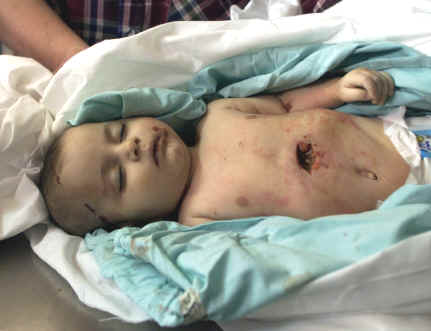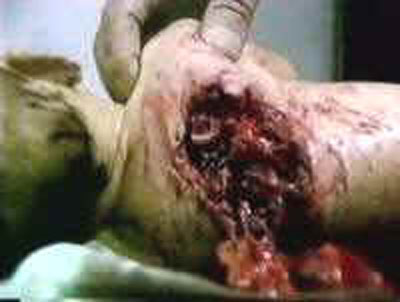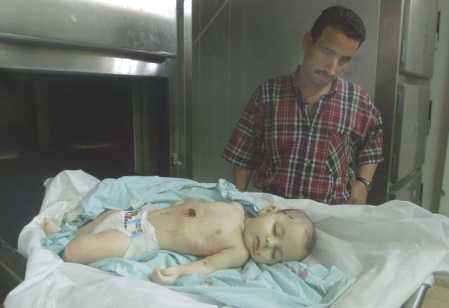It was there, as they stepped outside, that an Israeli tank shell ripped through a low wall next to their front gate. Razorlike fragments of shrapnel sliced into the baby, killing her almost instantly and severely wounding her mother and the other children. "There was blood everywhere here," said Rocha Hijo, Iman's 15- year-old aunt, scuffing her foot. As the youngest known victim of the violence, Iman quickly became another poignant symbol of violent conflict. For the Palestinians, who gathered by the thousands for her funeral here on Tuesday, the infant was the innocent victim of what they contend is an Israeli policy of collective punishment, with fierce military reprisals on entire neighborhoods after real or alleged guerrilla attacks on Israelis.
They note that there was never any allegation that the Hijos harbored gunmen in their modest compound, which was in effect under 24-hour surveillance. But for Israelis, who said they opened fire after Palestinian militants lobbed six mortar shells at a Jewish settlement, Neve Dekalim, Iman Hijo has also become a symbol. Israeli diplomats and army spokesmen were quick to depict the child as the latest tragic casualty of what they say is a deliberate Palestinian guerrilla tactic of firing from dense urban neighborhoods with the hope of inviting a politically useful military response. "Children and babies should not be involved in this terrible war," said Prime Minister Ariel Sharon, saying he felt great sorrow at the death but blaming it on Palestinian provocation.
Here at the Hijo home, on the militarized border separating the refugee camp from the Israeli settlement a mile west, the infant's death looks messier and less calculated, with an amateur mortar brigade provoking what the Israeli military itself may have concluded was a display of disproportionate and perhaps misdirected force. As Rocha Hijo opened the home to visitors today, Gen. Shaul Mofaz, the army chief of staff, was quietly touring bunkers nearby, gathering reports. According to accounts by Israeli military reporters, which the army declined to deny or confirm, he told officers the shelling of the camp was an "exaggerated" response. Though senior Palestinian officials denied the mortar attack, the settlers offered accounts and physical evidence. And Khan Yunis residents freely acknowledged that their neighborhood was used by roving mortar squads.
After Monday's mortar attack, Israeli tanks pounded the area with what Israeli press reports said were 25 hollow shells, each capable of piercing a wall and killing anyone in its path. The tanks appear to have been aiming at an empty municipal market, across the street from the Hijo house and perhaps 300 yards from the nearest Israeli outpost. If a mortar crew was operating out of the market, as some in the army believed, they apparently escaped unscathed. The only victims of the barrage were members of the Hijo family, a hundred yards away. The family said the house appears to have been strafed simultaneously from the back, at close range, while what may have been a stray shell aimed at the market hit the front.
Many Israeli commentators, virtually all of them military veterans, have skeptically questioned their army's assertions that it invariably responds to attacks with surgical sharp-shooting and pinpoint bombing. Only a few cases of documented shooting deaths by Israeli troops of unarmed Palestinian civilians have prompted internal investigations, according to the army. Irking the Israeli government, the international investigative committee headed by former Senator George J. Mitchell urged Israel to limit itself to the use of "nonlethal force," and to better supervise young draftees under fire.
The training of recruits has also come under question. Today's newspapers reported a fatal shooting in a live-ammunition exercise on Monday, and said it was the third such accidental death in a week. But Rocha Hijo, like many Palestinians, is a believer in the deadly accuracy of Israeli firepower. She is convinced that her family could only have come under fire deliberately, and angrily dismissed Mr. Sharon's expression of regret. "If he is really serious, why did he send his soldiers here?" she said. "Why did he give the orders to his soldiers to kill? `Sorry' isn't enough."





